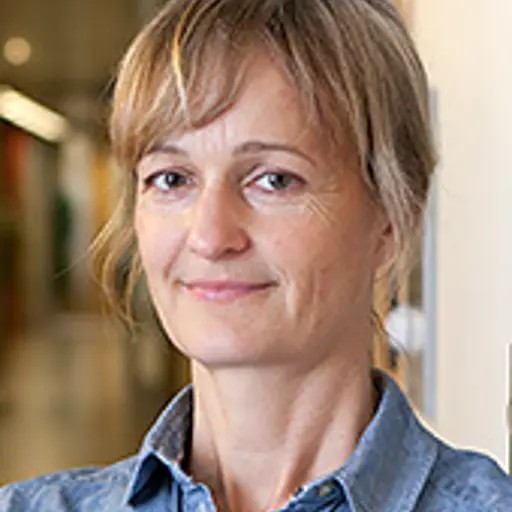Course syllabus adopted 2022-02-15 by Head of Programme (or corresponding).
Overview
- Swedish nameCirkulär ekonomi
- CodeTEK680
- Credits7.5 Credits
- OwnerMPTSE
- Education cycleSecond-cycle
- Main field of studyEnergy and Environmental Systems and Technology
- DepartmentTECHNOLOGY MANAGEMENT AND ECONOMICS
- GradingTH - Pass with distinction (5), Pass with credit (4), Pass (3), Fail
Course round 1
- Teaching language English
- Application code 28116
- Maximum participants90
- Block schedule
- Open for exchange studentsYes
Credit distribution
Module | Sp1 | Sp2 | Sp3 | Sp4 | Summer | Not Sp | Examination dates |
|---|---|---|---|---|---|---|---|
| 0119 Examination 7.5 c Grading: TH | 7.5 c |
|
In programmes
- MPAEM - MATERIALS ENGINEERING, MSC PROGR, Year 2 (elective)
- MPDES - INDUSTRIAL DESIGN ENGINEERING, MSC PROGR, Year 2 (elective)
- MPMAR - MARITIME MANAGEMENT, MSC PROGR, Year 2 (elective)
- MPPEN - PRODUCTION ENGINEERING, MSC PROGR, Year 2 (elective)
- MPSES - SUSTAINABLE ENERGY SYSTEMS, MSC PROGR, Year 2 (elective)
- MPTSE - INDUSTRIAL ECOLOGY, MSC PROGR, Year 1 (compulsory elective)
- MPTSE - INDUSTRIAL ECOLOGY, MSC PROGR, Year 2 (elective)
Examiner
 Maria Ljunggren
Maria Ljunggren- Associate Professor, Environmental Systems Analysis, Technology Management and Economics
Eligibility
General entry requirements for Master's level (second cycle)Applicants enrolled in a programme at Chalmers where the course is included in the study programme are exempted from fulfilling the requirements above.
Specific entry requirements
English 6 (or by other approved means with the equivalent proficiency level)Applicants enrolled in a programme at Chalmers where the course is included in the study programme are exempted from fulfilling the requirements above.
Course specific prerequisites
Basic university-level knowledge in environmental science or environmental engineering.Aim
The course aims to provide students with a rich understanding of the merits and challenges of transitioning to a more resource-efficient and circular economy. Drawing from multiple disciplines, including engineering, management and sustainability sciences, students gain knowledge on underlying principles and visions as well as theory and tools that support the formulation and assessment of resource-efficient and circular measures. By exploring real-world examples, students synthesize and apply the knowledge gained.Learning outcomes (after completion of the course the student should be able to)
- Describe historic and future projections of
natural resource use and associated sustainability challenges.
- Describe roots, rationales and core elements of various
approaches to the circular economy.
- Account for circular economy strategies, their
potential benefits and limitations.
- Account for actors, their options, drivers and barriers
for adopting circular economy strategies.
- Formulate strategies for a more circular economy based
on relevant theory and methods from multiple disciplines.
- Assess strategies for a more circular economy based
on relevant theory and methods from multiple disciplines.
- Critically discuss the implications of a more
circular economy for sustainable development.
- Communicate orally and in writing the knowledge and skills acquired.
Content
A more circular economy is advocated as an
essential contribution to a more sustainable, low carbon, resource-efficient
and competitive economy. Strategies over the full life cycle - from design and
production to use, reuse, repair, remanufacturing and recycling - are suggested
to maintain the value of products, materials and resources for as long as
possible. This potentially creates new opportunities for and requirements on individuals,
businesses, authorities and policy makers across the value
chains. The course aims for students to develop a broad understanding of the circular economy,
its potential benefits and limitations as well as examples of circular
solutions put into practice. It covers theory and methods from industrial
ecology, supply chain management, public policy, product design, production
engineering and waste management, presented in the context of the circular
economy. Organised in three themes, the first presents
roots, rationales and principles of the circular economy. Applying a systems
perspective, both physical resource flows and actors are traced over life
cycles including options for and implications of change. The second theme addresses product design, use,
reuse, repair, remanufacturing and recycling. As a parallel third theme, real examples
of circular solutions are explored through various disciplinary lenses, aiming
for students to gradually synthesize and apply the course content.
Organisation
The course is comprised by a series of
lectures given by lecturers from various disciplines and by invited guests from
business and authorities. There are several stand-alone exercises as well as
shorter ones integrated in the lectures. A larger project is conducted in
multi-disciplinary groups. Attendance at certain compulsory activities is required to pass the course.
Literature
The literature is a collection of articles and reports available electronically at Chalmers library, through google scholar or at the course website. All lectures slides (including guests) are part of the course requirements.Examination including compulsory elements
The examination comprises of an individual written exam and written and oral presentation of the group project. The final course grade is determined by the exam and the group project results. All compulsory elements must be completed to pass the course.The course examiner may assess individual students in other ways than what is stated above if there are special reasons for doing so, for example if a student has a decision from Chalmers about disability study support.